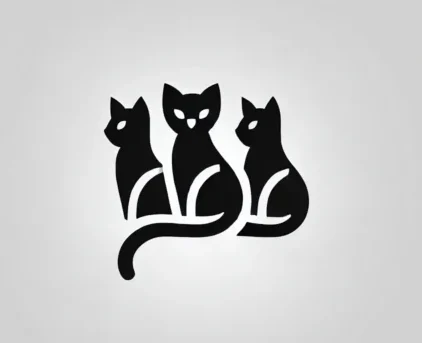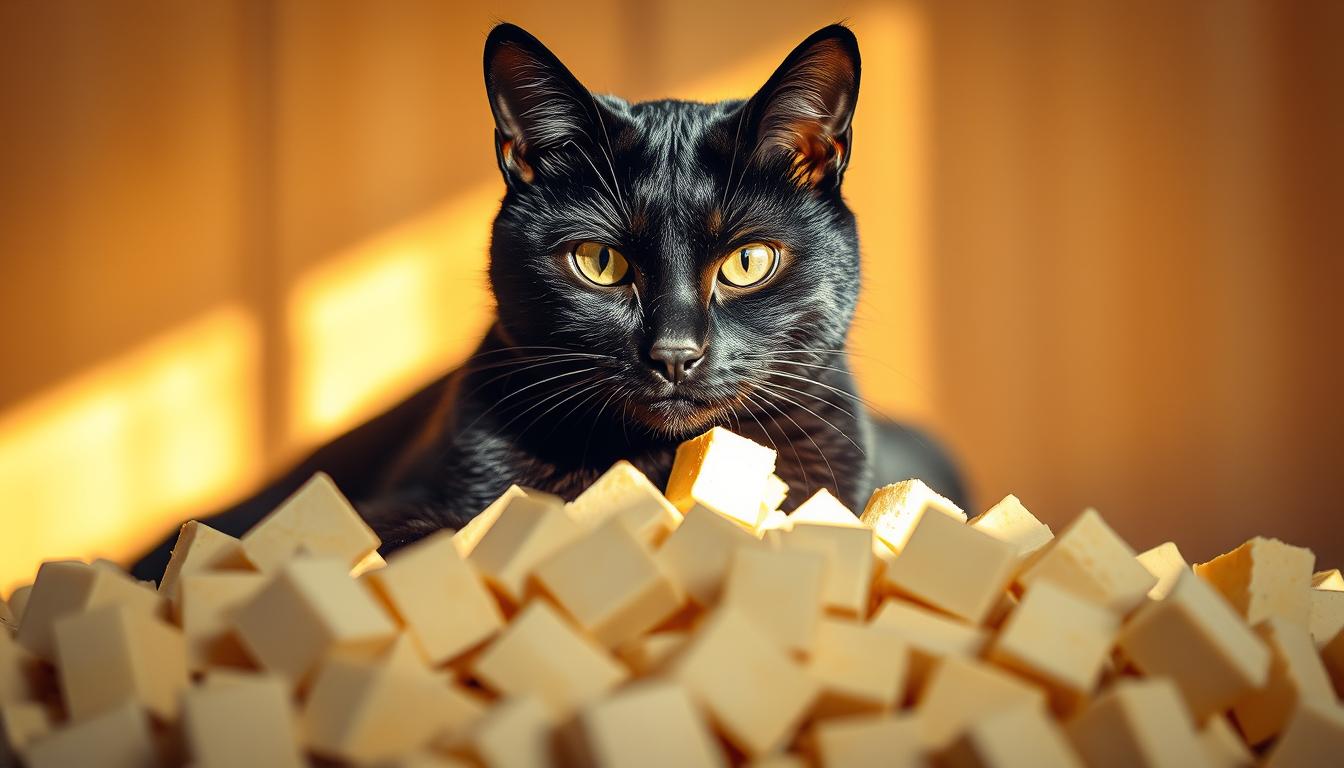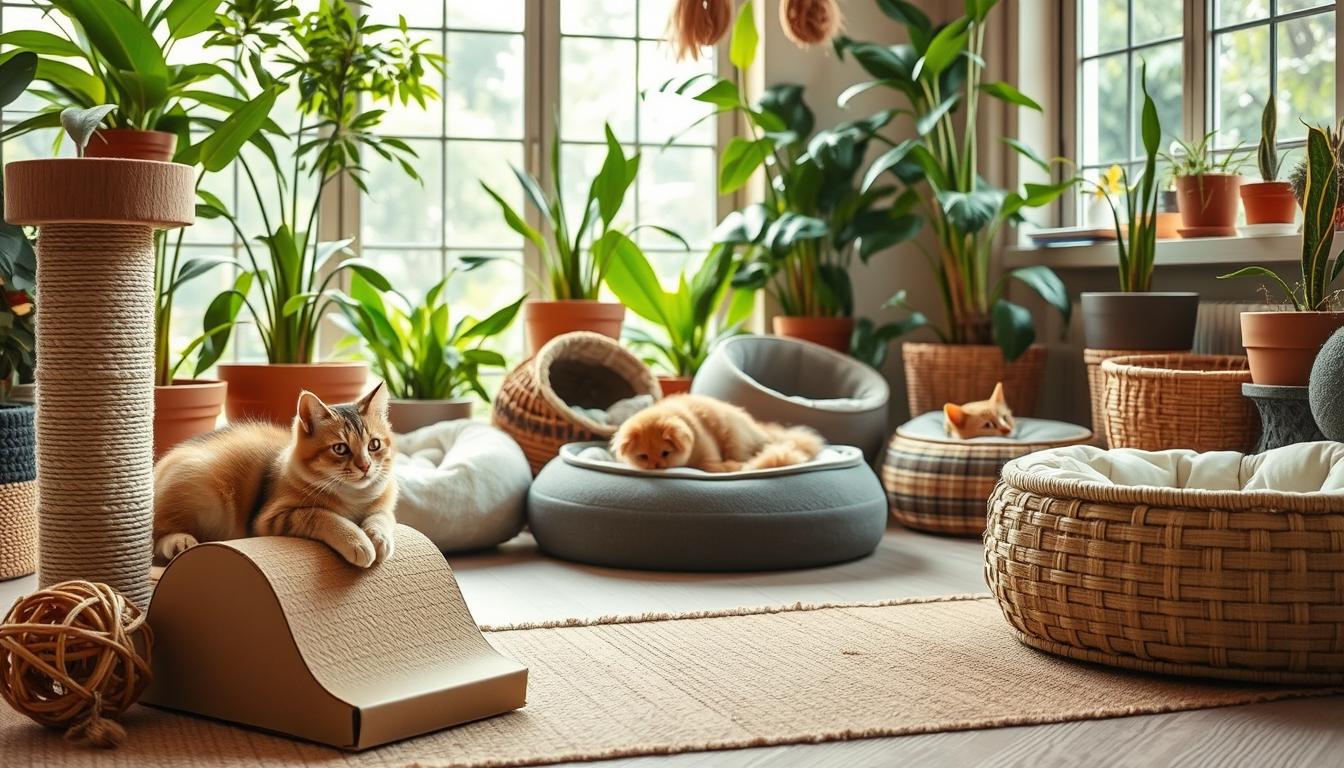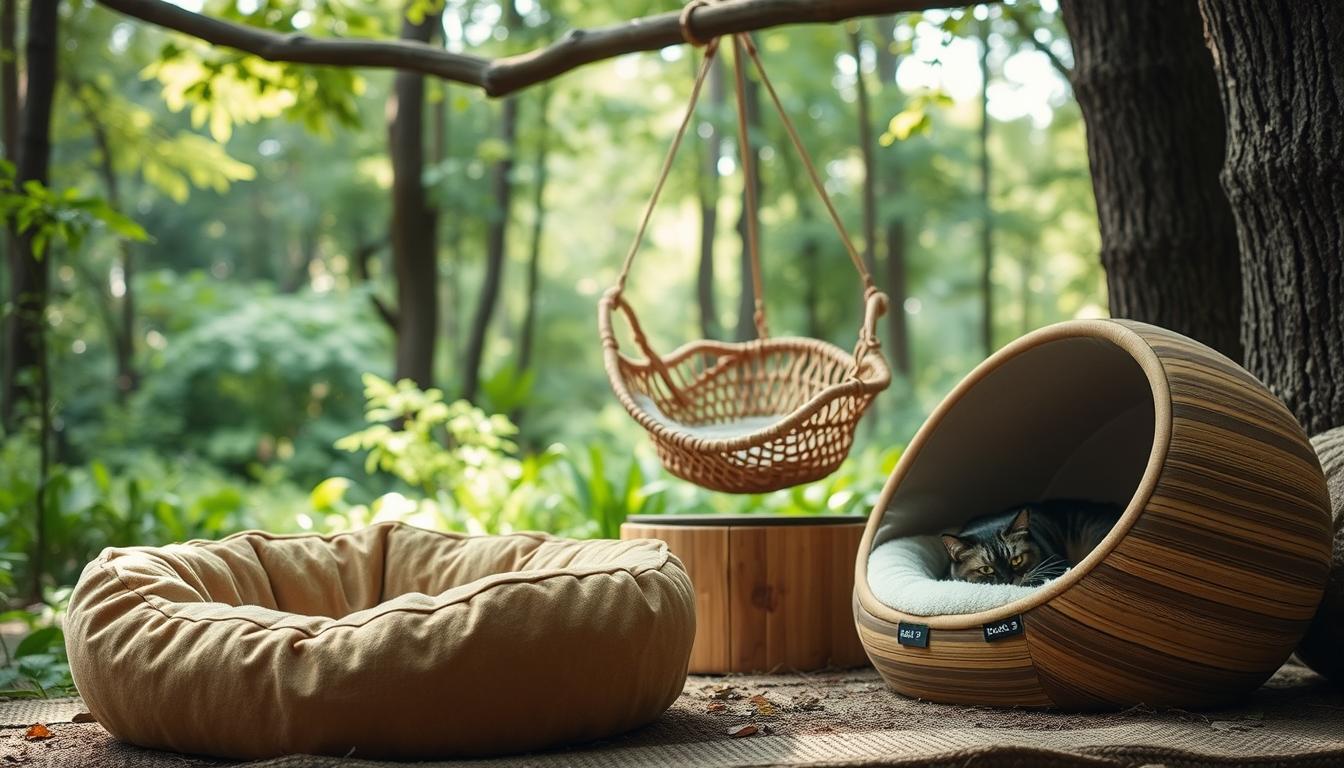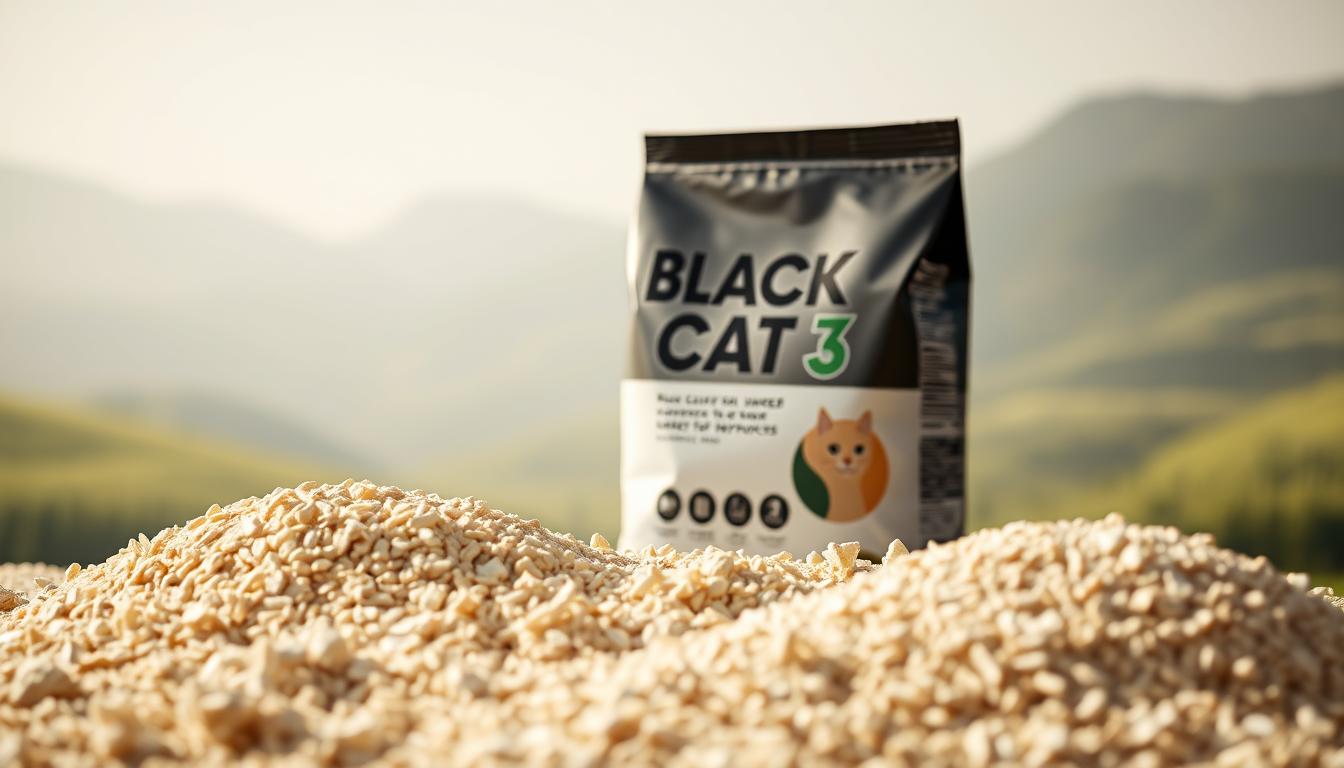Imagine a curious kitten named Whiskers, whose soft paws tread lightly across a home filled with love. Her human companion, like many caring pet parents, wants only the best for her—especially when it comes to her cozy litter box. Lately, whispers about a natural alternative made from soybean leftovers have sparked curiosity. Could this be the gentle solution families seek?
This eco-friendly option transforms soybean pulp—a byproduct of foods like soy milk—into fluffy granules that feel kind under tiny paws. Unlike traditional options, it’s free from harsh chemicals, making it a favorite among veterinarians and “cat whisperers” alike. One shelter volunteer shared, “Our feline friends seem happier with this softer texture—it’s like walking on clouds!”
Families are discovering how simple swaps can create healthier spaces for pets and children. As more households embrace this trend, questions arise about its true benefits. Let’s uncover how this innovative approach supports both playful kitties and the planet they call home.
Key Takeaways
- Made from repurposed soybean pulp, offering an earth-friendly choice
- Free from artificial additives, ideal for sensitive paws and noses
- Praised by animal experts for its non-irritating texture
- Creates a safer environment for pets and families
- Easy transition process from traditional litter types
Understanding Tofu Cat Litter
In cozy homes across America, families are discovering a fluffy secret hiding in their pets’ corners. This gentle bedding begins its journey in kitchens where soybeans become milk, leaving behind soft, crumbly pulp. Instead of tossing this leftover treasure, clever minds transform it into something magical for furry friends.
What Is Tofu Cat Litter?
Picture tiny clouds made from soybean leftovers—light, airy, and kind to paws. After soy milk production, factories collect the remaining pulp and dry it into soft pellets. These biodegradable granules feel like a cushion underfoot, perfect for delicate toes. “Our rescue kitties adore it,” says a shelter worker. “It’s like giving them a mini playground!”
How Is It Made from Soybean Pulp?
The process starts with food-grade materials. Workers clean and bake the pulp until it forms crumbly bits. No chemicals or artificial scents—just pure, earthy goodness. Check out how it compares to traditional options:
| Feature | Traditional Clay | Soybean-Based |
|---|---|---|
| Main Material | Clay strips | Repurposed pulp |
| Dust Level | High | Almost none |
| Tracking | Common | Minimal |
| Eco-Friendly? | No | Yes |
Since these pellets are larger than sand-like clay, they stay put better. Plus, their natural absorbency locks away odors without harsh perfumes. Best of all? Every bag gives new life to what was once trash—helping both pets and the planet breathe easier.
Is tofu cat litter safe?
Curious paws deserve gentle care. Many families wonder about the hidden ingredients in their pet’s favorite spots. One playful tabby named Luna discovered her new litter box filled with soft soybean granules—and promptly batted them like tiny snowballs. Her owner chuckled, knowing these crumbs came straight from food kitchens.
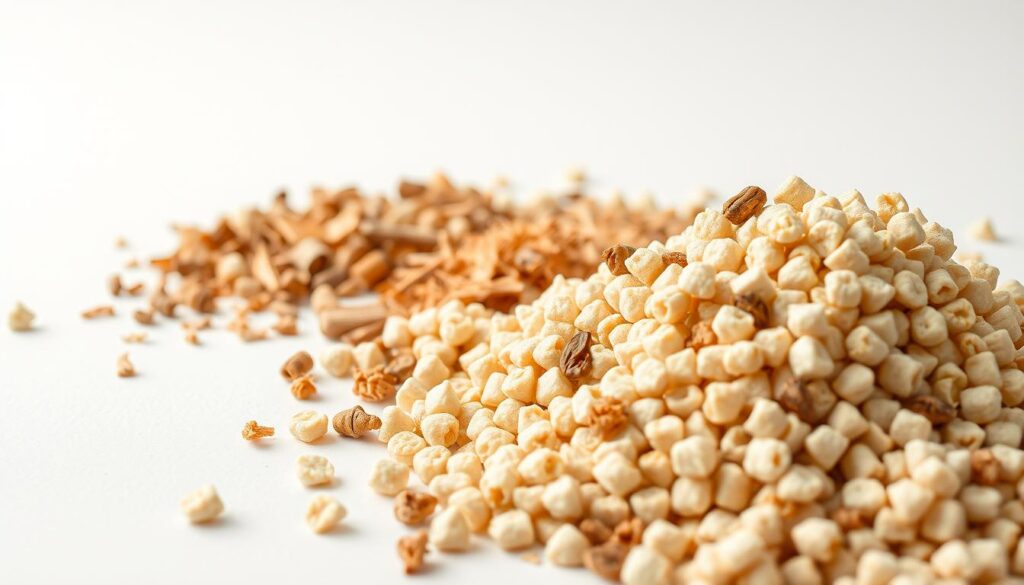
Nature’s Recipe for Happy Paws
The magic begins with soybean pulp baked into bite-sized pieces. Food-safe materials mean even nibblers stay protected. “Our kittens treat it like snack time,” admits a shelter worker, “but we never worry—it’s just plant stuff!”
Traditional options sometimes hide sharp dust or artificial scents. See how they stack up:
| Feature | Clay Granules | Soybean Option |
|---|---|---|
| Safety if Eaten | Risky | Harmless |
| Dust Particles | Common | Rare |
| Smell Fighters | Chemicals | Natural fibers |
Luna’s family loves how the granules trap odors using plant power instead of sprays. Every scoop feels like tending a tiny garden—clean and earthy. Best of all? Peace of mind blooms when fluffy friends explore safely.
Benefits and Advantages of Tofu Cat Litter
Meet Bella, a playful tabby whose fluffy paws once left trails of sandy granules across her family’s floors. Since switching to soybean-based bedding, her home stays cleaner—and her sneezes vanished! Three key benefits make this choice purr-fect: fewer stray pellets, cleaner air, and simpler cleanup.
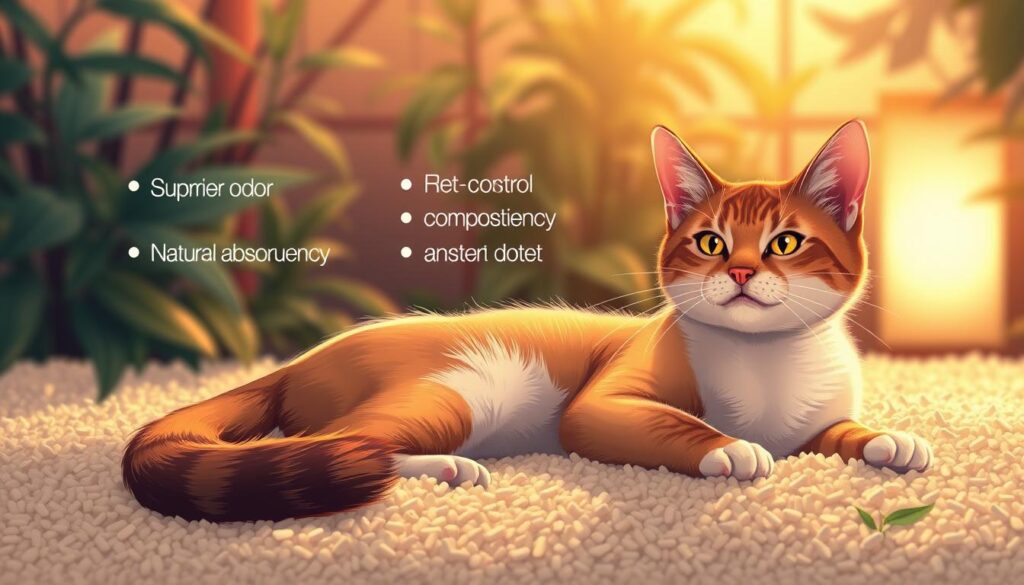
Low Litter Tracking and Minimal Dust
Bella’s large, lightweight pellets roll less than tiny clay bits. “It’s like comparing beach balls to marbles,” laughs her owner. Check how it stacks up:
| Feature | Traditional Clay | Soybean Pellets |
|---|---|---|
| Pellet Size | Small grains | Chunky pieces |
| Dust Level | Clouds when poured | Gentle sprinkles |
| Tracking | Scatters easily | Stays in box |
| Odor Control | Chemical sprays | Natural fibers |
Bella’s family loves walking barefoot again—no gritty surprises! The air feels fresher too, since minimal dust means fewer sniffles for everyone.
Excellent Odor Control and Easy Cleaning
When Bella does her business, magic happens. Moisture transforms pellets into “clay-like clumps” that lift out in one scoop. “It’s like cleaning up LEGO blocks!” her owner cheers. Natural soybean fibers absorb smells better than perfumed powders.
Every evening, they scoop firm clumps into a compost bin. No sticky residue—just a tidy litter box that smells like fresh earth. Compared to old clay messes, this feels like upgrading from chalkboards to tablets!
Families everywhere are discovering these perks. As one vet notes, “Happy cats mean happy homes—and this choice delivers both.”
Drawbacks and Considerations for Tofu Cat Litter
Milo’s family loved their new soybean bedding—until rainy days brought unexpected surprises. Damp air turned their storage closet into a breeding ground for fuzzy green patches. “We learned the hard way,” sighs Milo’s owner. “Nature’s gifts need careful keeping.”
Issues with Mold and Storage
Like bread left in a lunchbox, soybean granules need dry homes. Humid spaces invite unwanted guests—tiny mold spores that thrive in moisture. Proper storage solves this puzzle. Keep bags sealed tight in cool pantries, far from steamy bathrooms.
One shelter volunteer shares, “We store ours with rice packs—they soak up extra dampness!” Regular scooping helps too. Letting clumps linger creates wet spots where trouble grows.
Higher Cost Compared to Traditional Clay
At the pet store, soybean bags cost more than clay litter. But families like Milo’s see hidden treasures. “Each scoop lasts longer,” they explain. “And no dusty footprints!”
| Factor | Clay Litter | Soybean Option |
|---|---|---|
| Monthly Cost | $8 | $15 |
| Landfill Waste | High | Low |
| Health Risks | Dust clouds | None |
While traditional clay seems cheaper, its environmental price stays hidden. Mining clay strips the earth, and used granules pile up in landfills. Soybean bedding breaks down naturally, becoming garden compost instead of waste.
“Yes, it costs more,” admits one vet. “But what’s the value of clean air and happy lungs?” For many, that answer makes every penny count.
Tofu Cat Litter Versus Traditional Clay Litter
At a bustling pet store, two boxes sat side by side—soybean pellets whispering of green fields, clay granules dusty from deep mines. Families paused, wondering which choice would nurture both playful paws and blooming gardens. Let’s explore how these options shape our world and whisker-friendly homes.
Environmental Impact and Sustainability
The soybean process begins in sunlit kitchens. Leftover pulp from foods like tofu gets baked into soft granules, giving waste new purpose. Meanwhile, traditional clay journeys start with bulldozers scraping earth—a practice called strip mining that scars landscapes.
| Aspect | Soybean Option | Traditional Clay |
|---|---|---|
| Source | Food byproducts | Mined clay |
| Biodegradable? | Yes (composts in months) | No (500+ years) |
| Landfill Impact | Reduces waste | Piles up |
One gardener shared, “Used soybean pellets become soil food—clay just sits there forever.” Every bag chosen helps heal the environment, turning litter boxes into Earth’s allies.
Performance in Clumping and Cleaning
When water touches soybean granules, magic happens. They form tight clumps that lift out like puzzle pieces. Clay often crumbles, leaving messy bits behind. Market reviews cheer, “No more dusty paw prints—just quick scoops!”
The texture difference shines during playtime. Soybean pieces feel like beach pebbles—smooth and gentle. Clay’s gritty sand often sticks to paws, trailing across floors. Families report fewer vacuum sessions after switching options.
With superior quality clumping and kinder earth habits, soybean cat litters offer a win-win. As one parent noted, “Clean homes and clean consciences? That’s purr-fect!”
Transitioning Your Cat to Tofu Cat Litter
Oliver’s humans wondered how their sleek-furred explorer would react to his new bathroom setup. Would he turn up his nose or embrace the change? With patience and playful tricks, they discovered a joyful secret—slow steps create purr-fect success.
Practical Tips for a Smooth Transition
Start by mixing tiny amounts of soybean bedding into the old granules. Day by day, increase the ratio like adding sprinkles to ice cream. “We used a 25% swap each week,” shares one family. “Soon, our tabby was digging in happily!”
Keep the box in its usual corner—consistency comforts curious cats. Reward brave explorations with crunchy treats. A vet advises, “Celebrate every small win. Positive vibes build trust!”
Establishing a Familiar Litter Routine
Clean the litter box daily to keep textures inviting. Use the same scoop and schedule—time matters less than routine. One parent notes, “Our kitty thrives on predictability. Same spot, same hour—it’s her happy place!”
If whiskers twitch nervously, add a handful of old granules back temporarily. Most cats adjust within 2-3 weeks. Oliver’s family saw progress by day 10: “He pranced in like it was always his throne!”
This thoughtful choice rewards people and pets alike. With gentle guidance, fluffy friends embrace change—proving that love and patience always light the way.
Conclusion
When leftovers transform into treasures, both pets and planet rejoice. This natural bedding, crafted from repurposed soybean pulp, offers gentle comfort for delicate paws while keeping homes fresh. Its light granules trap odors like nature’s sponge, leaving rooms free from harsh chemical smells.
Families find joy in simpler cleanups—clumps lift out neatly, reducing scattered waste. Though storage needs care and costs run higher, valid reasons explain these quirks. Quality materials break down harmlessly, unlike landfill-clogging alternatives.
One small change ripples outward. Choosing earth-friendly options supports healthier cats and happier people. Like corn kernels in a harvest, every thoughtful choice matters. Together, they build a world where whiskered friends and their humans thrive side by side.
In the end, the right bedding becomes more than a box filler—it’s a loving promise. A promise to nurture playful paws, protect tender noses, and honor the ground we all share.
